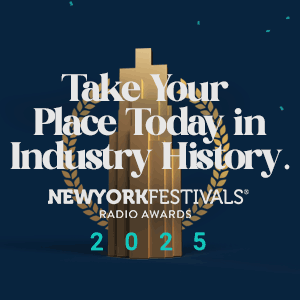 We talk a lot about “online” as if it’s still 2005. People today don’t go online. We don’t plug in modems or dial up. We don’t spend time surfing the web, eBanking or online dating. Being online is just life in 2017. Since 2000, we’ve done a great job of creating a digital overlay to our world, but there are still gaps and effort required of consumers: Text four digits to an eight digit number to get real time bus information; go to a website to find out more; or “search this” to download our app. The next stage is to better bridge reality with the lattice of the Internet. For example, while I’m not quite as excited about voice as many, TV ads that instruct you to ask Alexa to order something are interesting and reduce complexity. As Alexa, Siri, Bixby are built into phones and devices, you’ll soon be able to speak and get help anywhere. But what can brands do next to bridge the gap between online and real world, to enhance consumer experience?
We talk a lot about “online” as if it’s still 2005. People today don’t go online. We don’t plug in modems or dial up. We don’t spend time surfing the web, eBanking or online dating. Being online is just life in 2017. Since 2000, we’ve done a great job of creating a digital overlay to our world, but there are still gaps and effort required of consumers: Text four digits to an eight digit number to get real time bus information; go to a website to find out more; or “search this” to download our app. The next stage is to better bridge reality with the lattice of the Internet. For example, while I’m not quite as excited about voice as many, TV ads that instruct you to ask Alexa to order something are interesting and reduce complexity. As Alexa, Siri, Bixby are built into phones and devices, you’ll soon be able to speak and get help anywhere. But what can brands do next to bridge the gap between online and real world, to enhance consumer experience?
QR codes could be the solution.
QR codes have dominated life in Japan since the late 1990’s, and have since taken off in China, but have never really been adopted in the West. Nobody understood what they were or what to do with them. Historically they have required downloading a special app or embedding something in another app. The mixture of no clear use cases, no existing behavior, and friction to download has killed any attempts. (I actually tried making the Western World’s first QR code ad campaign in 2005, but I think they were only scanned twice – and that may have been me.)
QR Codes have many advantages. They are free to use, free to make and free to distribute – it’s just an image that can be created dynamically in seconds. They can be featured anywhere you want: In magazines and stores, on clothing and signs. They can be encrypted, secure, and thus used for payments. By their very nature, QR codes create a virtuous circle in reverse.
Pinterest recently announced new ‘Pincodes’, making it even easier to explore ideas and be inspired by products and places. Pincodes are scannable codes on products, which will link to Pinterest boards and ideas. Pinterest already has some major US brands on board, like Nordstrom and Home Depot, leveraging opportunities in e-commerce. There will also be Pincodes on Kraft Heinz products, showing you recipes using those items. This certainly does attempt to close the gap between the online and real world. If we can find ways to leverage QR codes to make great experiences and reward people, the future could present fascinating opportunities for delivering ROI to both consumers and brands across the customer journey. We could automatically convert awareness and consideration to purchase by creating print ads that you can buy products directly from. We could scan spirit bottles to see cocktail recipes with links to additional ingredients, and reorder a pair of jeans we love by merely snapping a picture of their label, driving additional purchase and retention.
Spotify now embeds QR-style codes in their app so that you can share music in seconds, and Shazam uses them to make business cards come to life in AR. More recently, Apple has embedded automatic scanning of QR codes in the IOS camera function, and Google added them as a clear option on Chrome. We now have over one billion devices that can access them. The new wave of QR codes opens up a world of visual search opportunities that brands can tap into very easily, with huge benefits.
QR codes represent a vastly under tapped technology when it comes to delivering true ROI to consumers across their journey, and missed opportunities for brands to create two of the most critical contributors to purchases, loyalty and advocacy: Increased touchpoints and reduced friction. When we look at what the consumer actually needs from technology like QR codes, we’ll deliver so much more for them and for brands.
Written by Tom Goodwin, Zenith Media


